Glandularia canadensis Plant Identification (Flower, Leaf, Care, Uses)
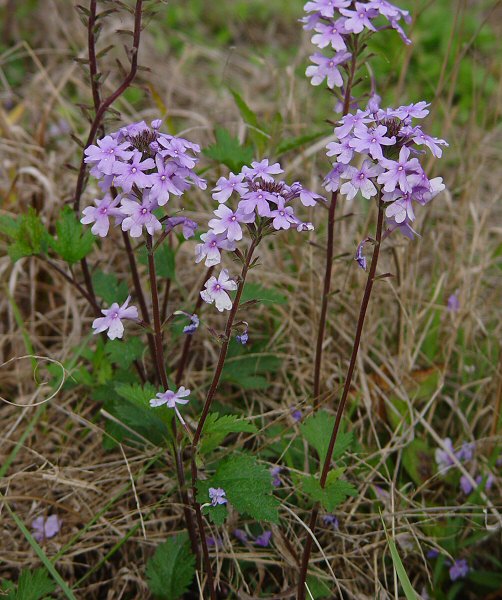
Family – Verbeaceae
Stems:
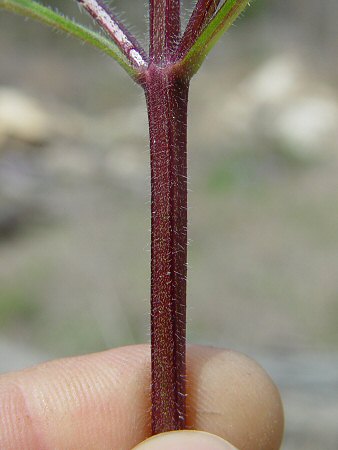
Leaves:
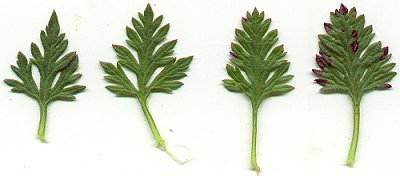
Inflorescence:
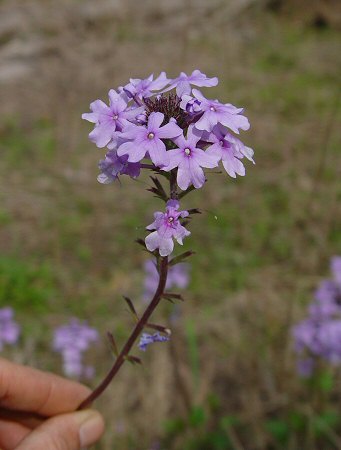
Flowers:
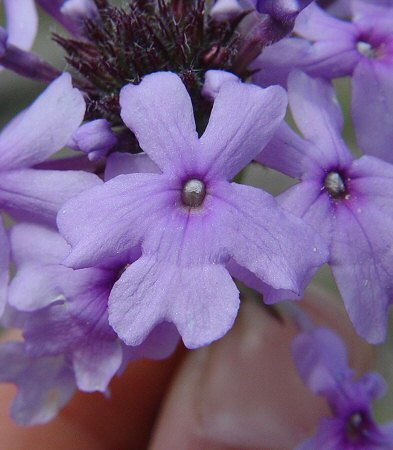
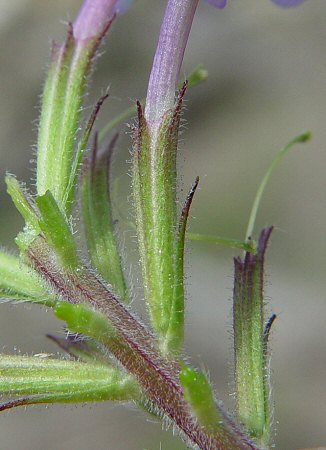 Calyx.
Calyx.
Flowering – February – June. Often again in the fall.
Habitat – Sandhills, roadsides, waste ground, disturbed sites.
Origin – Native to North America.
Other information – This species can be found scattered throughout much of Alabama and is probably more common than reported. The plant can be identified by its pubescent stems (which are typically decumbent), pinnately-lobed, opposite leaves, and its big spikes of large flowers. The flowers range from white to pink to deep purple. The calices are glandular pubescent. This species grows well from seed and makes an excellent no-care garden specimen.
The genus name Glandularia derives from the Latin “gland(i)” meaning “an acorn, a gland” and refers to the glands found on many plants in this genus.
The species epithet canadensis means “of Canada” and refers to the plants presence in that country.
A synonym in Verbena canadensis (L.) Britton.
Alabama Distribution:
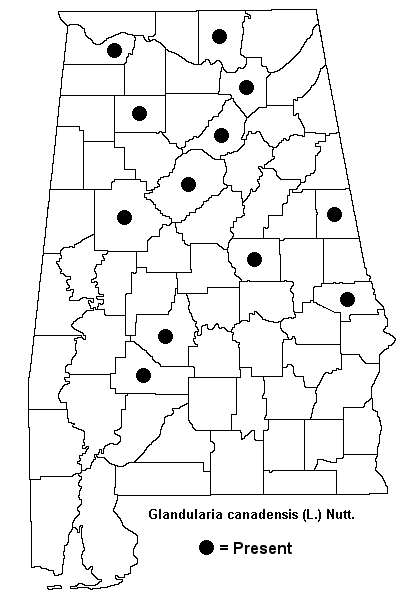
Photographs taken off Hwy 263, Butler County, AL., 3-18-06.

